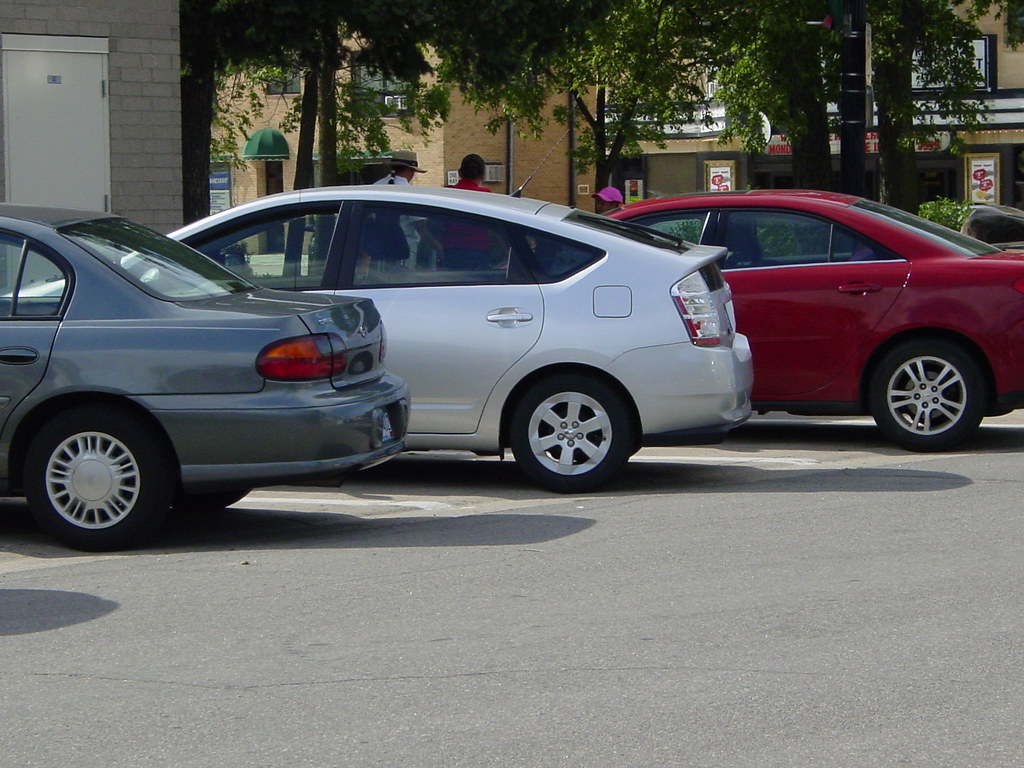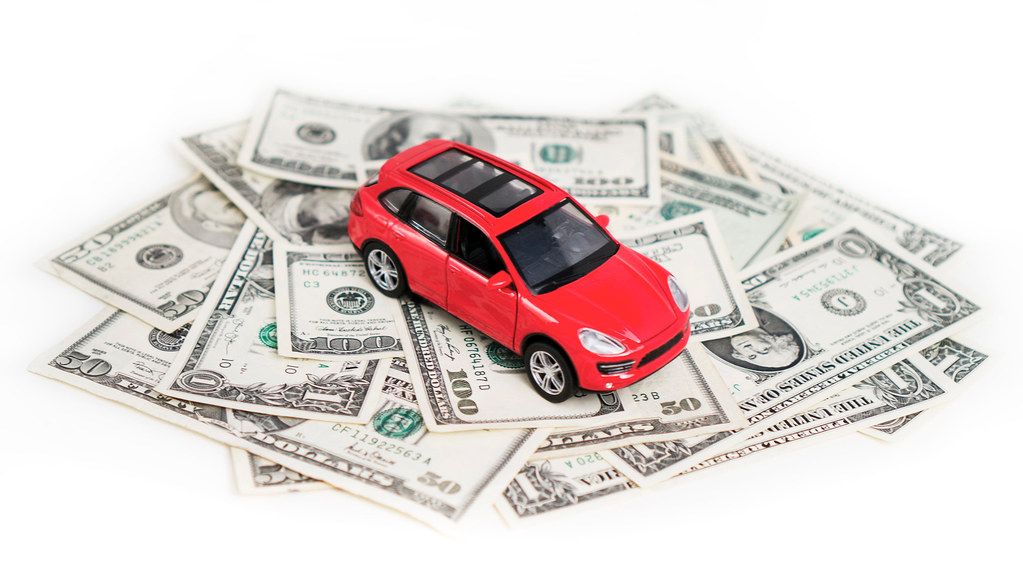
That sinking feeling in the pit of your stomach is unmistakable—you’re standing where you left your car, but it’s gone. Panic and confusion immediately set in, and a million questions race through your mind. What do you do now? In this high-stress situation, knowing the exact steps to take can make the difference between a quick recovery and a devastating loss. But don’t let the shock paralyze you; swift, informed action is your most powerful tool.
Time is incredibly critical for recovery. According to data from the National Insurance Crime Bureau (NICB), acting fast significantly boosts recovery odds, with 45% of stolen vehicles being recovered within just two days of being reported. This initial period is a race against time, and a calm, methodical approach will yield the best results. You need to officially document the theft to trigger the law enforcement and insurance processes designed to help you.
This guide is your definitive, step-by-step manual for navigating the crisis of a stolen vehicle. We will walk you through the urgent first steps you must take in those crucial initial hours, empowering you with a clear, actionable plan to maximize your chances of finding your stolen car and dealing with the immediate aftermath. By focusing on these non-negotiable actions, you can replace panic with purpose and get the recovery process moving.

1. **Verify Your Car Is Genuinely Stolen**Before sounding the alarm and initiating a full-blown search, it’s crucial to take a moment and confirm that your vehicle isn’t missing for another, less dramatic reason. This quick verification prevents a false report and allows you to focus your efforts correctly. Sometimes, what feels like a theft is simply a misunderstanding or an oversight, and it’s better to rule out those possibilities first.
First, consider if your car might have been towed. Check for any parking violations you might have inadvertently committed or recent street cleaning schedules in the area. Contact local towing companies or the police non-emergency line, as they often maintain records of towed vehicles. It’s also worth checking with household members or friends who might have borrowed the car without informing you, or if it was repossessed by a lender if payments were missed. These scenarios, while frustrating, are far less severe than outright theft.
This initial verification step is paramount because it ensures that when you do contact law enforcement, you’re reporting an actual crime. Providing accurate information from the outset helps police allocate resources appropriately and prevents unnecessary confusion. Taking this brief pause to confirm the situation sets the stage for a more efficient and targeted response to what you now know is a genuine theft.
Read more about: Mastering Car Title Security: 13 Essential Strategies to Safeguard Your Vehicle and Finances from Deceptive Scams

2. **File a Detailed Police Report Immediately**Once you have confirmed that your car is indeed stolen, your very next action is to contact your local police department. You should call their non-emergency number or use their online crime-reporting portal, if available, as soon as you discover your car is missing. This immediate reporting is a cornerstone of the recovery process, as time is of the essence in getting the vehicle’s information into national databases.
Be ready to provide a comprehensive list of details about your vehicle and the circumstances of the theft. This includes your Vehicle Identification Number (VIN), which you can find on your insurance card, policy, registration, purchase contract, or title. You’ll also need its license plate number, make, model, color, and year, along with any other unique identifying features such as custom paint, aftermarket sound systems, or modifications. Don’t forget to mention your vehicle title information or, if financed or leased, the lender’s or lessor’s details, the vehicle’s most recent mileage, service records, and any recent photos you have. A list of personal possessions that were in the car, any GPS or anti-theft devices, and whether anyone else recently had keys to the vehicle are also vital. Finally, describe where you last parked the vehicle and any potential evidence at that location, such as broken glass on the ground.
Filing this report is more than just a formality; it triggers a national alert. When you file a report, police enter your car’s Vehicle Identification Number (VIN) into the National Crime Information Center (NCIC) database, making it visible to law enforcement nationwide. This crucial step prevents thieves from re-titling your car and significantly increases the chances of its recovery. Always ask for a copy of the police report, as you will absolutely need it for your insurance company and for your records. It’s the official documentation of the crime and your first line of defense.
Even if you don’t have comprehensive insurance, which covers your vehicle against theft or damage during theft, it’s critically important to file a police report. Alerting the police helps protect you from liability if the thief injures people, damages property, or commits crimes using your vehicle. This formal record helps establish that you were not in possession of the car at the time of any subsequent incidents, shielding you from potential legal ramifications.
Read more about: Revving Up the Reels: The Mind-Blowing Costs and Behind-the-Scenes Secrets of 14 Iconic Car Stunts by Top Action Stars

3. **Notify Your Insurance Provider Promptly**After filing your police report, contacting your insurance provider without delay is the next essential step. Even if you don’t have comprehensive coverage, which is typically required for theft, you should still alert your insurer as soon as possible. This immediate notification serves a vital purpose: it helps protect you from liability if the stolen car is involved in an accident, causes damage, or is used to commit crimes while it’s out of your possession. It establishes a clear timeline for when the vehicle was no longer under your control.
If you do have comprehensive coverage—and this is the type of coverage that specifically protects your car if it’s stolen or damaged during theft—then you should proceed to file an insurance claim immediately. Most insurance companies offer several convenient ways to do this: by phone, online through their website, or via their mobile app. To streamline the process, have essential information readily available. This includes your policy number, a copy of the police report (or at least the police report number), and details regarding when and where the theft occurred. An insurance adjuster will be assigned to your claim and will guide you through the subsequent steps, which may include arranging for a rental car if your policy includes rental reimbursement coverage.
It’s important to remember that while your auto insurance covers the vehicle itself, it typically won’t cover personal belongings that were inside the stolen car, such as your phone, laptop, or other valuables. For these items, you may need to file a separate claim under your homeowners or renters insurance policy. When considering such a claim, weigh the amount of your deductible against the cost of replacing the items. For instance, if you have a $1,000 deductible and your laptop cost $800, it would be more financially sensible to replace it out of pocket. Additionally, check if any credit cards you used for purchases offer purchase protection, as this could provide coverage for stolen items like an expensive laptop.
Reporting the theft promptly to your insurer is crucial not just for your claim, but also for your peace of mind regarding potential liability. Insurance companies have specific procedures for stolen vehicle claims, and adhering to their timelines and requirements will ensure a smoother process. This proactive communication helps protect your financial interests and provides a clear record that the vehicle was stolen, which is paramount for both insurance and legal purposes.
Read more about: 12 Simple Steps to Protect Your Legal Rights After a Minor Car Accident

4. **Contact Your Lender or Lessor**If your car is still under a loan or lease agreement, immediately contacting your lender or lessor is a non-negotiable step after discovering it’s stolen. This is a critical communication that informs them of the situation and ensures they are aware of the vehicle’s status. They have a financial interest in the car, and failing to notify them promptly could potentially lead to complications with your agreement or impact your credit.
When you contact them, be prepared to provide all the relevant details, including the police report number and the contact information for your insurance claims adjuster. This allows the lender or lessor to work directly with your insurance company, streamlining the communication and claims process between all parties. They will need to be involved in the insurance payout discussions to ensure their lien on the vehicle is properly addressed.
For leased vehicles, the process typically involves your full coverage auto insurance policy. The insurance will pay out the actual cash value (ACV) of the vehicle, as well as cover any outstanding lease balance. This ensures that your financial obligations under the lease agreement are satisfied, preventing you from being held responsible for a vehicle you no longer possess.
If your car is financed, the insurance settlement will first go to the lender to pay off your outstanding loan. It’s important to understand the potential scenarios here. If your insurance settlement is less than the loan balance, you will be responsible for making up the remainder. This is where gap insurance becomes invaluable, as it specifically covers the difference between your vehicle’s actual cash value and the amount you still owe on your loan. For example, if your loan balance is $18,000 and insurance pays out $15,000, you would owe the lender an additional $3,000 without gap insurance.
Conversely, if your insurance settlement is more than the outstanding loan amount, you will receive a check for the overage. For instance, if your loan balance is $10,000 and insurance pays out $13,000, the lender gets $10,000, and you would receive the remaining $3,000. Notifying your lender or lessor swiftly helps manage these financial implications and ensures that the necessary steps are taken to resolve your financial obligations related to the stolen vehicle.

5. **Alert Your State’s Department of Motor Vehicles**An often-overlooked but crucial step after reporting your car stolen is to contact your state’s Department of Motor Vehicles (DMV). This notification is essential for several reasons that protect you from potential future headaches and liabilities. By reporting the theft to the DMV, you initiate a process that formally records your VIN and license plates as stolen within their system.
This action helps to prevent the thief from attempting to sell your car or fraudulently applying for a new title in their name. The stolen status acts as a red flag that can halt such illegal transactions. Moreover, if your car is pulled over by law enforcement in another jurisdiction, the updated status in the DMV’s records will immediately alert them that the vehicle is stolen, aiding in its potential recovery and the apprehension of the culprits.
Beyond preventing criminal activity, alerting the DMV also protects you from incurring financial penalties. It prevents you from getting charged for unauthorized tolls, parking tickets, or registration fees that might accumulate while the vehicle is out of your possession. Without this report, any fines or charges associated with the stolen vehicle could mistakenly be directed to you, leading to unnecessary disputes and financial burdens.
Furthermore, the motor vehicle department will typically cancel your vehicle’s registration upon receiving the theft report. You may even be eligible to receive a prorated refund for any registration fees you have already paid for the remaining period. This ensures that you are not paying for a service you cannot utilize and formally removes your liability for the car’s registration. This step is a small but mighty administrative action that safeguards your legal and financial standing in the wake of a vehicle theft.
Read more about: 14 Simple, Smart Ways to Get Free or Cheap Roadside Assistance Beyond AAA

6. **Protect Your Identity and Finances**Were personal items such as your wallet, purse, laptop, cellphone, or mail in the stolen vehicle? If so, you could be at significant risk of financial fraud or identity theft. Thieves often look for more than just the car itself; any documents, cards, or electronic devices left inside can be exploited to gain access to your personal and financial information. Taking immediate action to protect your identity is just as vital as reporting the car theft itself.
Your first line of defense should be to safeguard your finances. If credit or debit cards were in the vehicle, freeze them immediately. Most credit card issuers allow you to do this quickly and easily through their website or mobile app. After freezing, contact your card issuers directly to formally report the cards as lost or stolen. This prevents any unauthorized transactions from being processed and limits your liability for fraudulent charges.
Next, turn your attention to your credit profile. Monitoring your credit reports can help you spot early signs of identity theft, such as new accounts opened in your name or unauthorized inquiries. You have the right to request a free fraud alert at the Experian fraud center. Placing a fraud alert instructs creditors to take extra steps to verify your identity before processing any new credit card or loan applications in your name. This adds an important layer of security, making it harder for thieves to impersonate you.
What’s especially convenient is that placing a fraud alert with one credit bureau (Experian, for instance) automatically applies alerts to your credit files at all three major bureaus: Experian, TransUnion, and Equifax. This comprehensive coverage ensures that your identity is protected across the board, providing you with valuable peace of mind during an already stressful time. Being proactive in these measures can save you immense trouble and financial loss down the line.
Read more about: Mastering Car Title Security: 13 Essential Strategies to Safeguard Your Vehicle and Finances from Deceptive Scams

7. **Utilize GPS Tracking Systems for Active Recovery**In the unfortunate event of a car theft, any technology that can aid in its recovery is an invaluable asset. Vehicles equipped with recovery systems like OnStar, LoJack, or other GPS trackers have a significantly higher rate of recovery, often providing real-time location data directly to the police. If your vehicle has such a system installed, utilizing it immediately becomes a critical step in its active recovery.
GPS tracking systems employ satellite technology to monitor your car’s location in real-time. This capability allows law enforcement to pinpoint your vehicle’s whereabouts, dramatically increasing the chances of a swift recovery. Many systems can be tracked via a smartphone app or a computer, offering you direct access to your car’s location, which you can then relay to the authorities. The ability to provide precise location data can shave off crucial hours, or even days, from the recovery process, directly translating to a higher likelihood of finding your car intact.
Beyond simple location tracking, some advanced GPS trackers offer additional features that further enhance security and recovery efforts. These can include geofencing, which alerts you if the car moves outside a designated geographical area, or even engine shutdown capabilities, which allow authorities to remotely disable the vehicle once it’s located and secured. These features not only aid in recovery but also act as powerful deterrents to professional thieves, making your vehicle a less attractive target.
Even if your car wasn’t equipped with an advanced system before the theft, understanding the effectiveness of GPS trackers can inform your future decisions. For vehicles that were equipped, ensuring these services are active and knowing how to activate their theft recovery features is paramount. Contacting the provider of your GPS system immediately after filing your police report can kickstart their tracking and communication with law enforcement, turning a passive wait into an active pursuit.
While no security measure is entirely foolproof against a determined thief, leveraging GPS tracking systems provides a critical advantage. It transforms the often-hopeless scenario of a stolen car into a manageable situation with a tangible path to recovery. Investing in such anti-theft devices, or simply knowing how to use your existing ones, can significantly boost your confidence and the pragmatic chances of getting your vehicle back, safely and quickly.” , “_words_section1”: “1945
That initial shock of a stolen car begins to recede, hopefully replaced by a wave of relief: your vehicle has been recovered! This is fantastic news, but it also signals the start of another critical phase. Just as swift action was vital in reporting the theft, a methodical approach is now key to navigating the recovery process, ensuring your safety, addressing any damage, and protecting yourself against future incidents. This next section guides you through the essential steps to take once your car is back, empowering you to handle the aftermath with confidence and precision.
Read more about: Beyond Instinct: 14 Cutting-Edge Ways Pro Athletes Engineer Victory Through Data Analytics

8. **Prioritize Your Safety and Contact Police Immediately Upon Discovery**The moment you learn your stolen vehicle has been recovered, your absolute first priority is personal safety. It’s incredibly tempting to rush to your car, driven by relief or frustration, but you must resist the urge to approach the vehicle yourself or attempt to confront anyone near it. Doing so could place you in a dangerous and unpredictable situation, as the occupants or individuals associated with the recovery might be hostile or involved in illicit activities. Your safety is paramount above all else.
Instead, your immediate action should be to contact law enforcement. Use their non-emergency line to report the recovery, or if you perceive any immediate threat, observe suspicious activity, or if the situation feels volatile, do not hesitate to dial 911. Provide the dispatcher with precise details: the exact location of the vehicle, its make, model, color, and license plate number. Additionally, describe its current condition and note any visible occupants. This vital information allows officers to respond appropriately and, most importantly, safely secure the scene.
Remember, police officers are trained to handle these situations. They will ensure the area is safe before anyone approaches the vehicle, protecting both you and the integrity of any potential evidence. Your role in this initial stage is to provide accurate information from a safe distance, allowing professionals to take the necessary precautions and control the situation effectively. This proactive but cautious approach safeguards your well-being and facilitates a smooth police response.
Read more about: Unveiling the Unseen: Masterful Hidden Messages and Ingenious Features, From Automotive Marvels to Clever Campaigns

9. **Cooperate with Police Investigation and Documentation**Once law enforcement arrives at the scene of your recovered vehicle, their primary goal is to secure the area and begin their investigation. Officers will work to ensure the location is safe for everyone involved before proceeding with any further processing. This initial security measure is crucial, as it protects both the public and the valuable integrity of any potential evidence that might lead to the apprehension of the thieves. You’ll need to cooperate fully with their instructions and inquiries.
Following the security assessment, the police will process the vehicle for evidence. This often involves carefully collecting fingerprints, DNA, or other forensic data that may have been left behind by the individuals who stole or used your car. They will also meticulously document any visible damage or alterations to the vehicle’s exterior or interior. This thorough evidence collection is a critical part of their investigation and can be instrumental in building a case against the perpetrators.
A crucial administrative step the police will take is updating the vehicle’s status in national databases. Your car will be removed from the stolen vehicle list, preventing any future complications that might arise from its previous status. Furthermore, you must obtain comprehensive police documentation. This includes requesting a recovery report, which details the date, time, and location of recovery, along with the vehicle’s condition. You’ll also need the original case number from your theft report and the contact details (name, badge number, phone, email) of the officer handling your recovery. This documentation is invaluable for insurance claims and any subsequent legal proceedings.
Make sure to keep both physical and digital copies of all these documents in a secure place. This meticulous record-keeping not only protects your interests but also significantly streamlines communication with your insurance company and any other relevant parties. Being proactive in gathering and organizing this police documentation is a key step in protecting your rights and ensuring a smooth resolution after your car’s recovery.
Read more about: 13 Common Reasons You Get Pulled Over That Aren’t About Speeding: A Driver’s Guide

10. **Notify Your Insurance Company of the Recovery**As soon as you receive confirmation that your stolen vehicle has been recovered, contacting your insurance provider without delay is one of the most critical next steps. Prompt notification is essential, especially if you have already initiated a theft claim. Informing your insurer immediately ensures they are aware of the vehicle’s updated status, which is vital for managing your claim efficiently and avoiding any potential complications with your coverage.
If your vehicle is recovered *before* your insurance company has had the chance to pay out your theft claim, the claims process will typically be put on hold for a thorough assessment. The insurer will arrange for an inspection to determine the full extent of any damage incurred while the vehicle was stolen, or if any items are missing. Should damage be present, your comprehensive coverage is designed to cover the repair costs, minus your deductible, allowing you to get your vehicle back in proper condition.
However, if your theft claim has already been settled and you have received an insurance payout, the situation changes. In most such cases, upon recovery, the vehicle legally becomes the property of the insurance company. They have compensated you for your loss, and thus, they now own the asset. While this is often the standard procedure, you may sometimes have the option to repurchase the vehicle from the insurer, although this specific possibility can vary significantly depending on your individual policy and the insurance company’s policies. Always clarify these details directly with your adjuster.
Regardless of whether a payout has occurred, maintaining open and continuous communication with your insurer is key. Provide them with the police recovery report number, the vehicle’s current location, and your preliminary assessment of its condition. Adhering to their specific procedures and timelines will ensure a smoother process, helping you resolve your claim and understand your options, whether that means repairing your vehicle or navigating a repurchase.
Read more about: 12 Essential Steps: Navigating a Hit-and-Run Accident Legally and Safely with Expert Guidance

11. **Retrieve Your Vehicle from Impound**Once the police have completed their initial processing and released your vehicle, it will most likely be held at a police impound lot or a private tow yard. To successfully retrieve your car, you’ll need to be prepared with specific documentation to prove both your identity and vehicle ownership. Typically, this includes a valid government-issued photo identification, such as your driver’s license, along with undeniable proof of vehicle ownership like the car’s title or current registration. Without these, the vehicle will not be released.
In addition to your personal and ownership documents, a crucial piece of paperwork you’ll need is a police release form or official authorization. This document confirms that the vehicle is no longer considered stolen in law enforcement databases and can be legally released back into your custody. It’s essential to obtain this from the police department that handled your recovery before attempting to pick up your car, as the impound lot will require it for verification.
Be prepared for the financial aspect of retrieving your vehicle, as accumulated towing and impoundment fees are almost always part of the process. These fees can vary considerably, often including an initial towing charge, an impound lot release fee, and daily storage fees that can quickly add up, especially if there’s a delay in retrieval. Inquire about the exact fees in advance to avoid surprises and ensure you have the necessary funds.
Before you drive your vehicle away from the lot, take the time for a thorough inspection. Meticulously check for any new damage that might have occurred during the recovery or while it was in the impound, and note any items that appear to be missing. Document everything with photographs, as this visual evidence will be crucial for your insurance claims. This final check ensures you have a comprehensive record of the vehicle’s condition at the point of retrieval.
Read more about: Your Ultimate Pre-Road Trip Checklist: 12 Essential Car Checks to Dodge Engine Trouble and Ensure a Smooth Journey

12. **Meticulously Address Damage and Missing Items**After the relief of retrieving your car, the reality of its condition often sets in. It is absolutely critical to meticulously document all new damage, both to the exterior and interior, and any items that may be missing. Take clear, high-resolution photographs from multiple angles, capturing close-ups of scratches, dents, broken glass, or any evidence of forced entry. Write detailed notes about every issue, no matter how minor it seems, as this comprehensive record will be an indispensable asset for your subsequent steps.
With your detailed documentation in hand, your next step is to file a *supplemental* police report. The initial report documented the theft; this new report officially records the additional damage or theft of contents that occurred during the vehicle’s absence. This updated report provides a formal, legal record for insurance purposes, establishing a clear timeline and scope of loss related to the recovery. Ensure you get a copy of this supplemental report for your records.
You will then need to work closely with your insurance company to address the repairs. Provide them with all your detailed documentation, including photographs and both police reports. Your insurer will assess the damage and determine coverage based on your policy, typically under your comprehensive coverage for theft-related damages. If the damage is minor, you might consider paying for out-of-pocket repairs to avoid making a claim, but for significant issues, pursuing an insurance claim is usually the most financially sound approach.
Finally, after the necessary repairs are handled, take the time to thoroughly clean your vehicle, addressing any residual evidence of the theft, such as lingering odors or debris. Consider re-securing the vehicle, which might involve replacing locks or ignition components, to regain full confidence in its safety. This comprehensive approach ensures that not only is the damage repaired, but your peace of mind is also restored, and the car is as secure as possible going forward.
Read more about: The 14 Essential Questions to Ask Before Buying a Car: Your Comprehensive Guide to Safety and Value

13. **Arrange a Professional Vehicle Inspection**Even if your recovered car appears to be in relatively good condition and you’ve already conducted a preliminary inspection, arranging for a professional vehicle inspection by a trusted mechanic is a non-negotiable step. Stolen vehicles are often driven recklessly, may have been involved in accidents, or could have been tampered with in ways that aren’t immediately obvious. Hidden mechanical or electronic issues could pose significant safety risks and lead to more severe problems down the line if not identified and addressed promptly.
During this comprehensive inspection, the mechanic will thoroughly examine every aspect of your vehicle. This goes beyond superficial damage, extending to critical components like the engine, transmission, brakes, suspension, and exhaust system. They will look for any signs of abuse, unusual wear, fluid leaks, or tampering with the vehicle’s essential systems. This in-depth check is paramount to identifying any underlying problems that could compromise your safety or the vehicle’s long-term reliability.
The inspection should also include a meticulous assessment of the car’s electronic systems. Thieves frequently manipulate ignition systems, alarm components, onboard computers, and even integrated GPS units. The mechanic will check for any compromised wiring, faulty sensors, or unauthorized modifications that could affect the vehicle’s functionality or security. If the car’s immobilization system or key programming has been altered, the mechanic will advise on the necessary steps to restore it to proper working order.
A critical outcome of this professional inspection is a detailed estimate of all necessary repair costs. This report is invaluable for your insurance claim, as it provides a professional, unbiased assessment of the damage and associated expenses. It ensures you receive fair compensation for repairs covered by your policy. Moreover, the mechanic will advise you on any immediate repairs required to make the car fully roadworthy, prioritizing safety components like airbags, seatbelts, or critical braking systems, giving you confidence in getting back on the road.
Read more about: The Unseen Shift: 14 Ways Car Subscriptions are Driving the Future of Mobility Beyond Traditional Ownership by 2035

14. **Update Vehicle Registration and Financial Accounts**Once your vehicle is safely back in your possession, it’s crucial to follow up with your state’s Department of Motor Vehicles (DMV) to update its status. You initially reported the car as stolen, leading to its VIN and license plates being flagged in their system. Now, you need to notify the DMV of its recovery to formally remove it from the stolen vehicle list. This action is essential to avoid potential administrative headaches and ensure your vehicle’s records are accurate, preventing any future confusion with law enforcement.
Beyond simply updating the stolen status, this interaction with the DMV also protects you from financial penalties. It prevents you from being charged for any unauthorized tolls, parking tickets, or traffic violations that might have accumulated while the car was out of your control. Since your registration was likely cancelled when the theft was reported, you will need to reactivate or re-register the vehicle, ensuring it’s legally compliant for use on public roads once again.
If your car was financed or leased, it’s imperative to inform your lender or lessor immediately about its recovery. They have a vested financial interest in the vehicle, and they need to be updated on its current status, especially after any insurance claim processing. Provide them with all relevant police and insurance documentation, as they will need to coordinate with your insurer regarding repairs or any outstanding balances. This step ensures your financial obligations are clear and properly managed.
Finally, continue to be vigilant about protecting your identity and finances. While you ideally froze cards and placed fraud alerts immediately after the theft (as covered in Section 1), the recovery of your vehicle is a good time to double-check these measures. If any personal documents were returned with the car, ensure they haven’t been compromised. Regularly monitor your credit reports for any suspicious activity, and keep all bank accounts under close watch to safeguard against potential identity theft or financial fraud that might have been set in motion during the car’s absence.
Read more about: Mastering Car Title Security: 13 Essential Strategies to Safeguard Your Vehicle and Finances from Deceptive Scams

15. **Implement Robust Theft Prevention Measures**The recovery of your car is a moment of profound relief, but it’s also a powerful reminder to reassess and bolster your vehicle’s security. Taking proactive steps to prevent future theft is not just wise; it’s an empowering way to regain control and significantly reduce your risk. Start by installing advanced anti-theft devices. While many modern cars have basic security, consider upgrading to a steering wheel lock, which provides a visible deterrent, or an immobilizer system that prevents the engine from starting without the correct key or code. High-quality alarms with motion sensors or loud sirens can also effectively deter thieves and alert you to any unauthorized access. These investments not only protect your vehicle but may also lead to reduced insurance premiums.
Your parking habits play an enormous role in deterring theft. Always choose well-lit areas with high visibility and consistent foot traffic, as thieves prefer the cover of darkness and isolation. Whenever possible, park your vehicle in a locked garage or a secure parking lot equipped with surveillance cameras. Avoid leaving your car in unattended lots or on deserted streets, especially overnight or in areas known for higher crime rates. These seemingly small changes in routine can make a significant difference in making your car a less attractive target.
Reactivating or installing a GPS tracking system is another powerful layer of defense. These systems utilize satellite technology to monitor your car’s location in real-time, allowing you to track it via a smartphone app or computer if it’s ever stolen again. Many advanced GPS trackers offer additional features, such as geofencing, which sends an alert if your car moves outside a predefined geographical area, or even remote engine shutdown capabilities, which can assist law enforcement in safely recovering the vehicle once it’s located. Investing in such technology provides invaluable peace of mind and significantly boosts recovery odds.
Lastly, pay close attention to key management. Ensure all keys, including any spare sets, are accounted for and securely stored. If there’s any suspicion that your original keys were compromised during the theft, consider having your vehicle’s locks re-keyed and new keys programmed. Never leave keys or key fobs inside your vehicle, even for a moment, and be cautious about where you store spare keys. Combining these multi-layered prevention strategies—advanced devices, smart parking, GPS tracking, and secure key management—creates a formidable defense against car theft, helping you protect your valuable asset for the long haul.
Read more about: Consumer Alert: Uncovering the Top 12 Car Parts Thieves Steal and How to Safeguard Your Vehicle
Recovering from car theft is a journey, not a single event. From the initial shock to the eventual recovery and repair, each step requires a clear head and decisive action. By following these practical, step-by-step guides, you’re not just reacting to a crisis; you’re actively taking control, empowering yourself with the knowledge and tools needed to navigate a challenging situation. Remember, staying informed, acting promptly, and implementing smart prevention measures are your best defenses. With these strategies, you can minimize your losses, maximize your chances of recovery, and drive forward with confidence, knowing you’ve done everything possible to protect your vehicle and your peace of mind.



